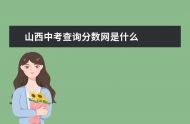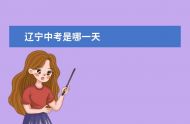今天大学路小编整理了2023年4月雅思阅读考试真题答案(4月24日) 剑桥雅思9的test4的第三篇阅读the development of museums实在是太难了吧。。我相关信息,希望在这方面能够更好的大家。
本文目录一览:

2023年4月雅思阅读考试真题答案(4月24日)
您好,我是专注留学考试规划和留学咨询的小钟老师。在追寻留学梦想的路上,选择合适的学校和专业,准备相关考试,都可能让人感到迷茫和困扰。作为一名有经验的留学顾问,我在此为您提供全方位的专业咨询和指导。欢迎随时提问!
如今4月24日的雅思考试已经完成,对于这一次的雅思考试相信也有很多学生想要了解它的真题,好让自己在之后的考试里能够有所准备。那么小钟老师今天就把这次雅思考试的阅读真题带给大家。
2023年4月24日雅思阅读真题与答案:
Passage 1
主题:海牛
参考答案:
1. nitrogen
2. sensitive bristles
3. trails
4. tufts
5. TRUE
6. FALSE
7. NOT GIVEN
8. FALSE
9. NOT GIVEN
10. dolphin
11. seagrass shortage
12. 1750
13. fishing net
Passage 2
主题:Are artists liars
参考答案:
14. vi
15. ii
16. iv
17. viii
18. i
19. v
20-21. BE
22-23. AE
24. (national) newspaper
25. arms dealers
26. victory
Passage 3
文章题材:议论文(科学)
文章题目:美国手语
文章难度:★★★★
题型及数量:段落信息配对+判断
题目及答案:待补充
可参考真题:剑桥15——TEST4 Passage2 Silbo Gomero - the Whistle 'Language' of the Canary Islands
雅思阅读高分技巧:
雅思阅读高分技巧1.identify the writer’s overall purpose, target audience, sources etc. 辨识作者的写作目的,目标读者,和文章来源
这种阅读技能需要学生从文章的结构,内容,用词通篇考虑。往往对应的是文章最后的一道选择题。一般说来,雅思阅读文章的写作目的一般是介绍某个社会现象,目标读者一般都是普通的具有一定认知能力的非专业性读者,文章都来自一些偏学术化的杂志和书籍。但具体的写作目的目标读者和文章来源要具体分析了。那么同学们平时读一些文章的时候就下意识地问问自己作者为什么写这篇文章,作者希望什么样的人来读这样的文章等等这样的问题,其实问这些问题既是读懂一篇文章的手段也是目的。如果读完了一篇文章还不能回答这样的问题证明可能有些地方确实没读懂。
雅思阅读高分技巧2.identify and follow key arguments in a text 识别并读懂文章中的主要论述观点
这种阅读技能是指从整体去把握一篇文章的结构,并对相应的重要的文章观点进行提炼理解的能力。雅思的阅读文章比较学术性,所以相对与其他的文体而言结构其实是比较容易把握的。但还是需要经过真题文章的仔细分析体会去学习英文议论说明性文字的结构特点,尤其注意体会区别出作者自己的观点和别人的观点,以及先负后正的写法。
雅思阅读高分技巧3.identify opinions and attitudes as opposed to facts 区分事实与观点态度
能够区分文章中的内容是观点态度或者是事实是一个阅读者应该具备的基本技能。如果阅读的时候不分青红皂白都认为是事实,我们就缺失了对文章信息的判断能力,阅读将可能是极其混乱的。人们不只在阅读外语文章的时候会犯这种错误。那么在文章中如果出现一些类似表示观点态度的词(比如 maintain, argue)要注意,这些词后面出现的应该就是观点和态度。观点和态度是主观的,不能被证明的。但如果是这样的表达:evidence show, experiment suggest后面跟的就应该是事实,可以被证明的。
雅思阅读高分技巧4.locate specific information 定位细节信息
雅思阅读有一种比较难的题型which paragraph contains the following information考察的就是定位细节信息的能力。这种能力是考察学生能不能在海量的信息里找到你最想找的信息然后进行阅读的能力。这反应了国外大学阅读量巨大的要求。学生不可能每个字都读,得具备这种找到最有价值的一点然后再进行相关阅读的能力。平时训练这种scanning的阅读技能。当然如果对全文结构不做一个skimming也就是大致了解文章结构而大致知道在哪几段中寻找,这种任务基本上是不可能完成的。这也反应了读书的一个基本步骤,拿到一本书我们应该先看目录,知道书的大致结构再由此在最相关的段落中寻找阅读兴趣点。因此这种题型需要skimming+scanning两种阅读技能的结合才能准确快速地解题。
雅思阅读高分技巧5.read for detailed information 细致阅读
雅思阅读高分技巧6.extract relevant information 摘取相关信息
当定位到最相关的句子之后,雅思阅读考试是希望学生能细致阅读并摘取出相关的信息答案的。而不是象那种什么不阅读阅读法说的那样不需要读原文就能解出答案。那么平时大家也应该进行相应的精读训练,把一些平时难以读懂的句子仔细通过各种方法真正读懂其意思。当然阅读的时候应该带着问题去有针对性的阅读,搜寻我们想通过阅读得出的最相关的信息。这些阅读技能对应的是雅思绝大部分的细节题:包括填空题,表格题,句子完成题。
雅思阅读高分技巧7.distinguish the main idea from supporting detail 区分主旨和细节
希望以上的答复能对您的留学申请有所帮助。如果您有任何更详细的问题或需要进一步的协助,我强烈推荐您访问我们的留学官方网站
,在那里您可以找到更多专业的留学考试规划和留学资料以及*的咨询服务。祝您留学申请顺利!
【雅思阅读翻译】C4T1P3——视觉符号与盲人
You should spend about 20 minutes on Questions 27–40 which are based on Reading Passage 3 below.
From a number of recent studies, it has become clear that blind people can appreciate the use of outlines and perspectives to describe the arrangement of objects and other surfaces in space. But pictures are more than literal representations. This fact was drawn to my attention dramatically when a blind woman in one of my investigations decided on her own initiative to draw a wheel as it was spinning. To show this motion, she traced a curve inside the circle (Fig. 1). I was taken aback. Lines of motion, such as the one she used, are a very recent invention in the history of illustration. Indeed, as art scholar David Kunzle notes, Wilhelm Busch, a trend-setting nineteenth-century cartoonist, used virtually no motion lines in his popular figures until about 1877.
最近的一系列研究表明,盲人可以理解用轮廓线和透视图表示的物体排列及空中的其他表面。但是图片表达的意思更胜于文字表述。当我研究的一位盲人女性自发地划出一个正在滚动的车轮时,这个现象极大地吸引了我的注意。为了展示车轮的运动,她在圆的中心画了一条曲线。我被吓了一跳。表示运动的线,例如她刚画的这条,是插图史上最近才有的发明。事实上,正如艺术学者David Kunzle所说,引领了19世纪潮流的卡通画家Wilhelm Busch直到1877年之前都没有在他最流行的人物形象中使用动态线条。
When I asked several other blind study subjects to draw a spinning wheel, one particularly clever rendition appeared repeatedly: several subjects showed the wheel’s spokes as curved lines. When asked about these curves, they all described them as metaphorical ways of suggesting motion. Majority rule would argue that this device somehow indicated motion very well. But was it a better indicator than, say, broken or wavy lines – or any other kind of line, for that matter? The answer was not clear. So I decided to test whether various lines of motion were apt ways of showing movement or if they were merely idiosyncratic marks. Moreover, I wanted to discover whether there were differences in how the blind and the sighted interpreted lines of motion.
当我要求其他接受研究的盲人画一个滚动的轮子时,一种很聪明的画法反复出现了:一些盲人把车轮的辐条画成了曲线。当被问到这些曲线时,他们都说这是一种表示运动的比喻手法。多数人规则,会认为,这种方式可以很好地表示运动。但是对于这种现象。会不会有种更好的表示方法,例如虚线和波浪线,或其他形式的线呢?答案还不明确。所以我决定测试各种表示运动的线条分别适合表示哪种运动,或者也许它们只是一些特殊符号。而且,我想要发现盲人和普通人眼中表示运动的线条有没有什么区别。
To search out these answers, I created raised-line drawings of five different wheels, depicting spokes with lines that curved, bent, waved, dashed and extended beyond the perimeter of the wheel. I then asked eighteen blind volunteers to feel the wheels and assign one of the following motions to each wheel: wobbling, spinning fast, spinning steadily, jerking or braking. My control group consisted of eighteen sighted undergraduates from the University of Toronto.
为了找出答案,我用凸起的线条画出了五个轮子,分别把辐条画成了曲线、折线、波浪线、虚线和伸出车轮的线。接着,我请18位盲人志愿者触摸轮子,并请他们把每个轮子对应在以下运动中:摇晃、迅速转动、稳定转动、颠簸或刹车。我的对照组由18多伦多大学的普通大学生组成。
All but one of the blind subjects assigned distinctive motions to each wheel. Most guessed that the curved spokes indicated that the wheel was spinning steadily; the wavy spokes, they thought, suggested that the wheel was wobbling; and the bent spokes were taken as a sign that the wheel was jerking. Subjects assumed that spokes extending beyond the wheel’s perimeter signified that the wheel had its brakes on and that dashed spokes indicated the wheel was spinning quickly.
除了其中一人,所有的盲人都把不同的运动与轮子相对应了。大部分人猜测曲线辐条表示轮子在平稳转动,波浪辐条表示车轮在摇晃,折线车轮表示车子受到颠簸。受试者猜测,辐条伸出车轮边缘表示轮子处于刹车状态,而虚线表示轮子在快速转动。
In addition, the favored description for the sighted was the favored description for the blind in every instance. What is more, the consensus among the sighted was barely higher than that among the blind. Because motion devices are unfamiliar to the blind, the task I gave them involved some problem solving. Evidently, however, the blind not only figured out meanings for each line of motion, but as a group they generally came up with the same meaning at least as frequently as did sighted subjects.
另外,普通人喜爱的表达与盲人喜爱的表达基本一致。而且普通人之间的共识度并不比盲人高。因为盲人对运动装置并不熟悉,所以我给他们的任务中也包括解决一些问题。但是,很明显,盲人不仅搞明白了线条运动的意义,而且作为一个团队,他们达成共识的普遍频率也不比普通人低。
We have found that the blind understand other kinds of visual metaphors as well. One blind woman drew a picture of a child inside a heart – choosing that symbol, she said, to show that love surrounded the child. With Chang Hong Liu, a doctoral student from China, I have begun exploring how well blind people understand the symboli* behind shapes such as hearts that do not directly represent their meaning. We gave a list of twenty pairs of words to sighted subjects and asked them to pick from each pair the term that best related to a circle and the term that best related to a square. For example, we asked: What goes with soft? A circle or a square? Which shape goes with hard?
我们发现,盲人也能理解其他种类的视觉符号。一个盲人女性在一个心形中间画了一个小孩——她说,选择这个符号,是为了表示孩子被爱包围。于是我和一个中国博士生刘长虹开始研究:盲人对于心形这样不直接表达含义的符号背后的意义,到底理解到了什么样的程度。我们给了普通人20对单词,并要求他们在每一对单词中选择一个代表圆圈的和一个代表方框的。比方说,我们问:哪个表示柔软呢?圆圈还是方框?哪个又表示坚硬?
All our subjects deemed the circle soft and the square hard. A full 94% ascribed happy to the circle, instead of sad. But other pairs revealed less agreement: 79% matched fast to slow and weak to strong, respectively. And only 51% linked deep to circle and shallow to square. (See Fig. 2) When we tested four totally blind volunteers using the same list, we found that their choices closely resembled those made by the sighted subjects. One man, who had been blind since birth, scored extremely well. He made only one match differing from the consensus, assigning ‘far’ to square and ‘near’ to circle. In fact, only a *all majority of sighted subjects – 53% – had paired far and near to the opposite partners. Thus, we concluded that the blind interpret abstract shapes as sighted people do.
所有的受试者都认为圆形表示柔软而方块表示坚硬。94%的人认为开心与圆形对应,而不是悲伤。也有一些词组出现了不同的意见:79%的人在快-慢和强-弱对比上意见分别一致。而只有51%的人认为圆形表示深,方形表示浅。当我们用完全一样的列表测试四个完全看不到的盲人时,我们发现他们的选择与普通人的选择非常相似。有个先天失明的人做得特别好。他只有一次连线与之前的移至答案不同,那就是把“远”与方联系起来,把近和圆联系起来。事实上,只有刚刚53%的普通人在远近上给出了相反的答案。因此,我们可以得出结论:盲人可以像普通人一样理解抽象图案的意义。
剑桥雅思9的test4的第三篇阅读the development of museums实在是太难了吧。。我
雅思阅读在雅思备考中是很重要的一部分,雅思阅读测中有各种类型的问题。不同的问题类型需要不同的解决问题的技能来回答问题以获得可观分的数。为了让同学们在雅思阅读考中更胸有成竹,下面小编就给大家介绍一下关于雅思阅读解题技巧之摘要填空题的相关内容,希望可以帮助正在准备雅思备考的同学。
有摘要、填空题类雅思阅读解题技巧吗?在雅思阅读中,摘要、填空题类题目在雅思阅读题目中也是占有一定分量的,掌握摘要、填空题类雅思阅读解题技巧有助于我们更好的做好这一类题。
1.先阅读答题指引部分,确定填空文章是所给阅读文章的全篇还是部分的缩写,而且还要了解所给单词是否可以多次使用。
2.利用例句确定答案在文章中的位置,如能在一组题内先查看例句及一个问题,并确定例句的关键词语与一个问题的关键词语在文章中的位置,即可确定其它各题的答案一定是处在它们之间的段落内,从而缩小了搜索答案的范围,而不必通篇阅读。
3.快速扫描填空文章了解其大致含义。
4.判别所给单词表中单词的词性。如果为雅思阅读短语,还须确定其相应的词性功能,通过判别词性可以缩小选词目标,从而缩短答题时间。
5.查看填后的词语及该填空所在句子,并理解其含义。
6.将单词表中选出的目标词语与所要填空的前后单词进行相互联系比较,利用语法及词法知识确定其准确性。
7.如果属于种题型,还可以利用关键词语与所给阅读文章的相关句子进行匹配。
8.填空所需词性如果为名词,而单词表中并无名词,仅有形容词,必须将该形容词转换成名词形式进行填空,但这种情况并不多见。
以上是摘要、填空题类雅思阅读解题技巧,希望广大烤鸭们能够抽出点时间细细的消化这些技巧,并将这些学到的技巧运用到平时的雅思复习中,只有这样,这些摘要、填空题类雅思阅读解题技巧才能真正的被你掌握。
以上就是大学路小编给大家带来的2023年4月雅思阅读考试真题答案(4月24日) 剑桥雅思9的test4的第三篇阅读the development of museums实在是太难了吧。。我全部内容,希望对大家有所帮助!

 四川大学眉山校区正式签约落户 2023年计划招生
四川大学眉山校区正式签约落户 2023年计划招生
 云南2023年普通高校招生第一次英语听力考试和口语测试网上报名考生须知
云南2023年普通高校招生第一次英语听力考试和口语测试网上报名考生须知
 北京2023年中考是哪一天 2023年北京中考日期
北京2023年中考是哪一天 2023年北京中考日期
 天津2023年中考是哪一天 2023年天津中考日期
天津2023年中考是哪一天 2023年天津中考日期
 河北2023年中考是哪一天 2023年河北中考日期
河北2023年中考是哪一天 2023年河北中考日期
 山西2023年中考是哪一天 2023年山西中考日期
山西2023年中考是哪一天 2023年山西中考日期
 内蒙古2023年中考是哪一天 2023年内蒙古中考日期
内蒙古2023年中考是哪一天 2023年内蒙古中考日期
 辽宁2023年中考是哪一天 2023年辽宁中考日期
辽宁2023年中考是哪一天 2023年辽宁中考日期
 吉林2023年中考是哪一天 2023年吉林中考日期
吉林2023年中考是哪一天 2023年吉林中考日期
 黑龙江2023年中考是哪一天 2023年黑龙江中考日期
黑龙江2023年中考是哪一天 2023年黑龙江中考日期









